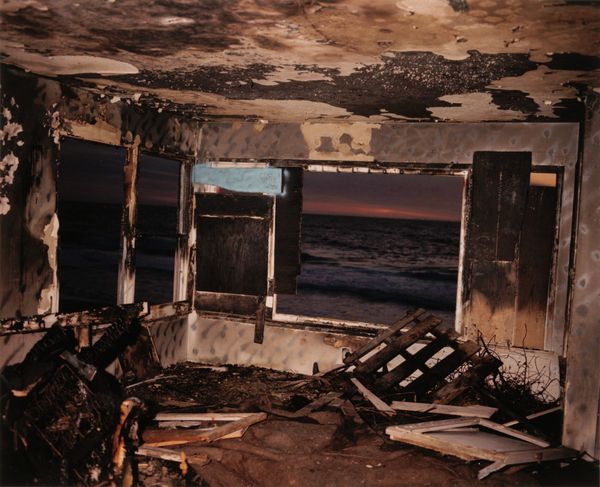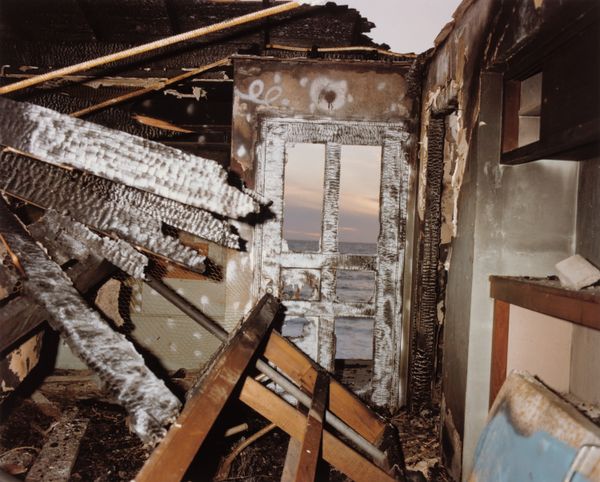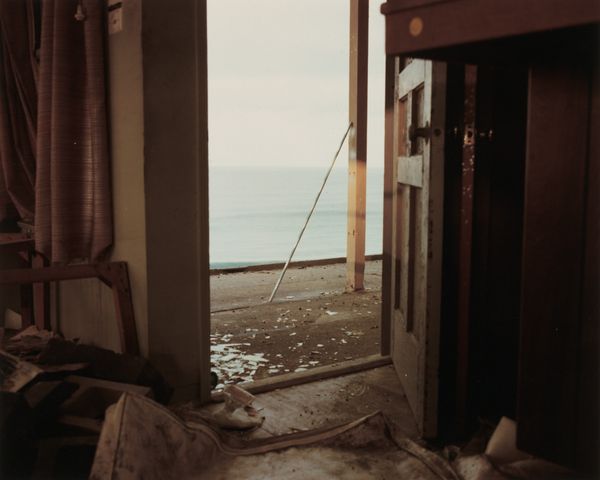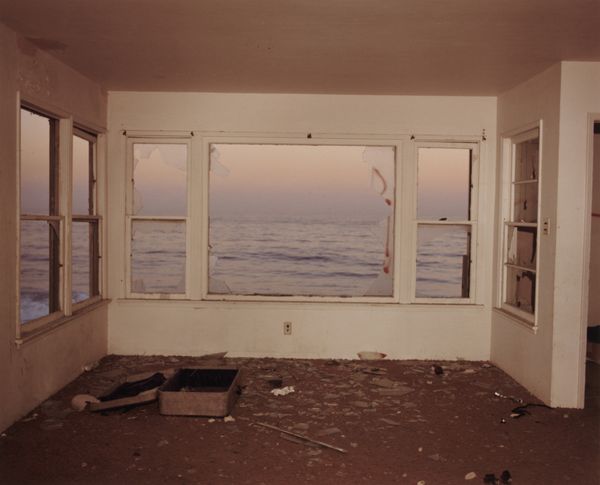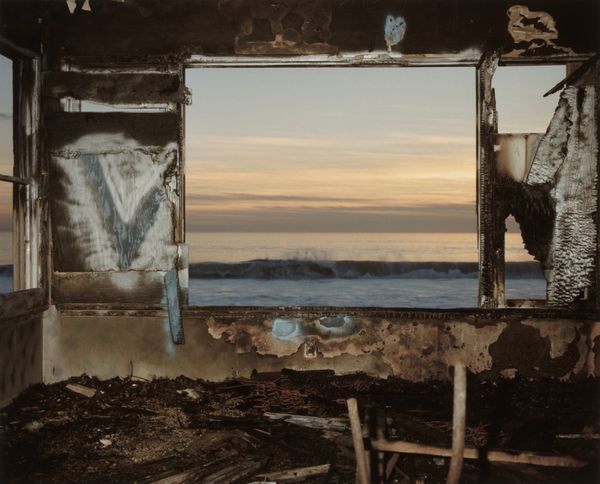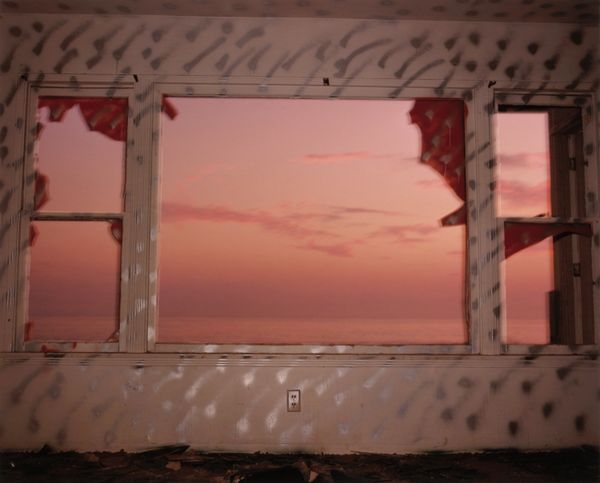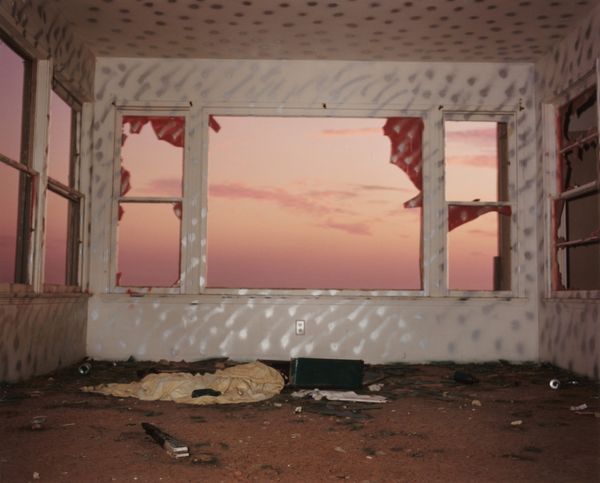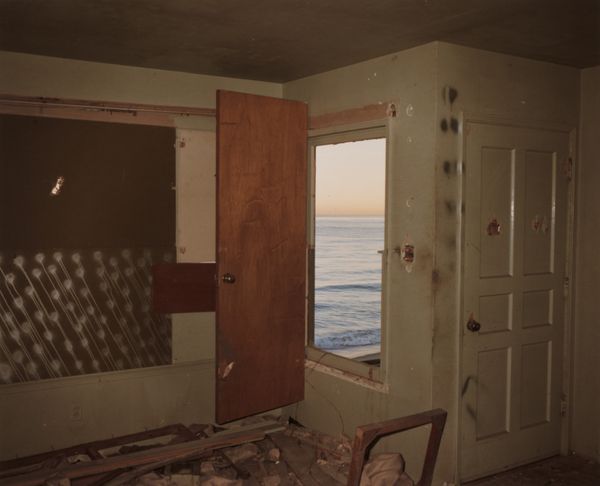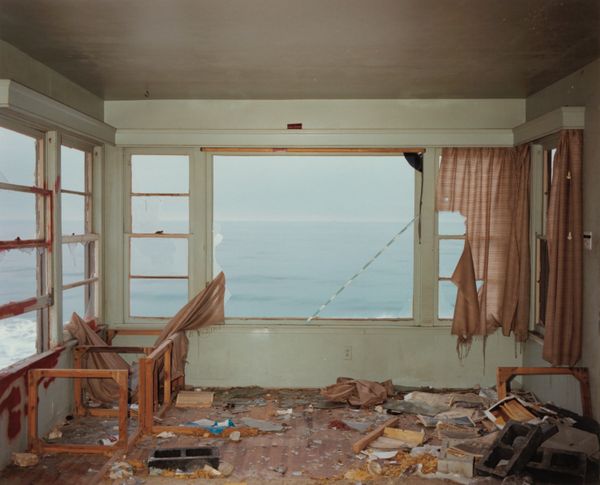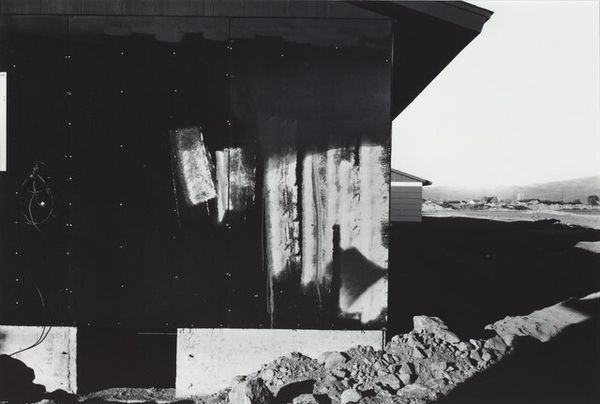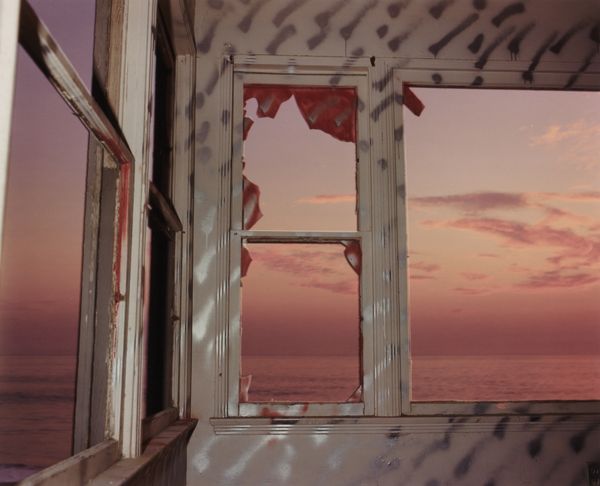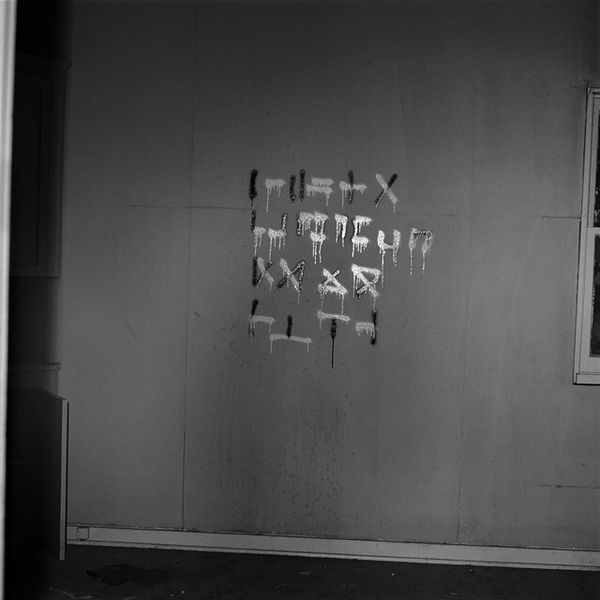
photography, site-specific
#
postmodernism
#
landscape
#
photography
#
site-specific
Dimensions: image: 24.77 × 30.48 cm (9 3/4 × 12 in.) sheet: 27.94 × 35.56 cm (11 × 14 in.)
Copyright: National Gallery of Art: CC0 1.0
Curator: This evocative photograph is titled "Zuma #37," captured in 1978 by John Divola. Editor: It has a melancholic beauty, doesn’t it? This stark contrast of decay with the serenity of the seascape viewed through the window... It really draws you in. Curator: Divola is known for his site-specific interventions. Here, he photographed abandoned buildings in Southern California, often adding his own graffiti or markings. The work reflects themes of urban decay, alienation, and the passage of time in the context of postmodernism. Editor: Yes, and it’s interesting that you mention "the passage of time" because the landscape beyond the window has such a timeless quality. The graffiti in contrast with the classicism of a landscape is a striking opposition. Do you see the "bulls eye" mark that dominates the graffiti on the wall? What does it symbolize to you? Curator: It could suggest many things—vandalism as target practice, a general symbol of aiming and missing. However, its very mundaneness is also notable. It feels divorced from any grand socio-political statement, emphasizing instead a sense of purposelessness inherent in abandoned spaces. This aesthetic perfectly represents late 1970s cynicism in Los Angeles's forgotten margins. Editor: Perhaps... but this stark contrast of destruction and natural beauty also generates a rich interplay of hope and despair. It is powerful. And from a psychological perspective, I find the composition intriguing. The broken window could symbolize shattered illusions, offering both an end and an altered perspective to begin again with more hope. Curator: Well, interpretations aside, Divola’s "Zuma #37" is a compelling representation of the artist’s ongoing engagement with marginal spaces and the dialogues they provoke. Editor: A dialogue between the ruin and the sublime, indeed. It makes you reflect on the layers of meaning we assign to what remains and what endures.
Comments
No comments
Be the first to comment and join the conversation on the ultimate creative platform.
